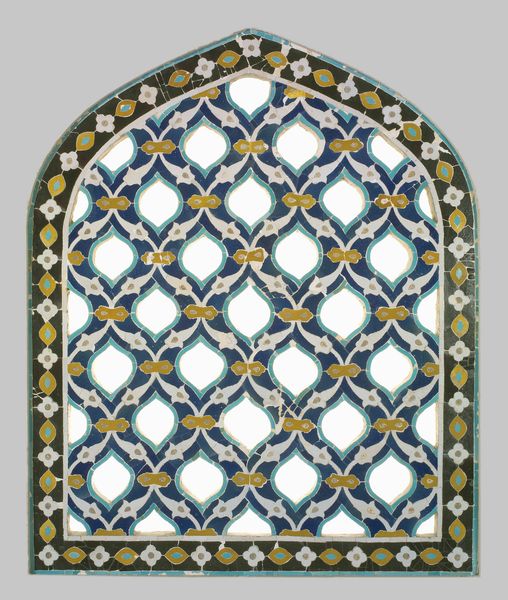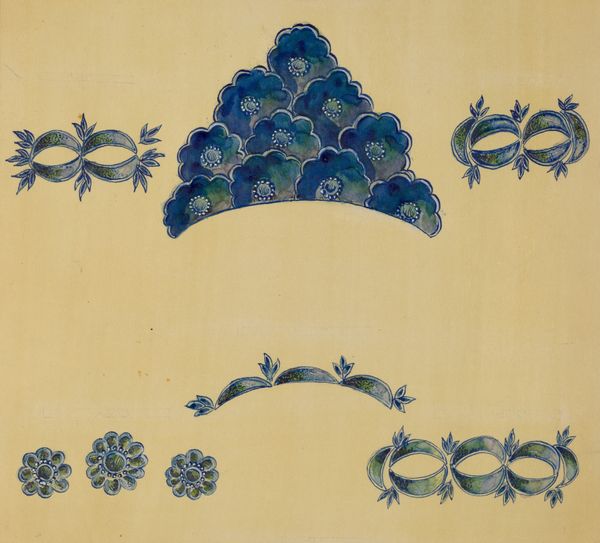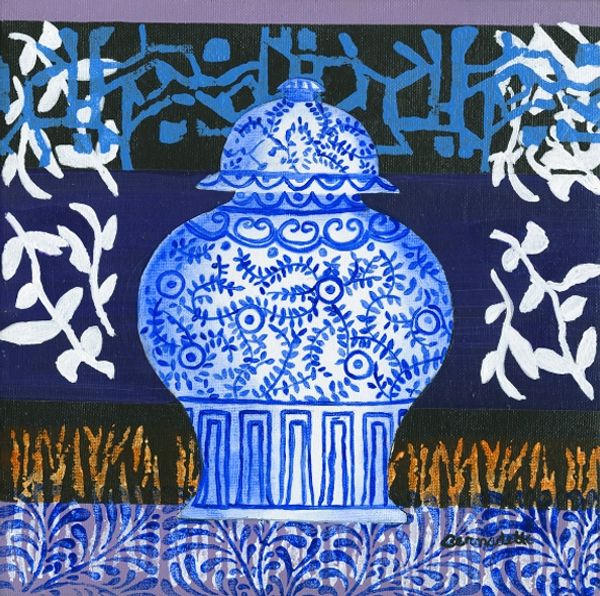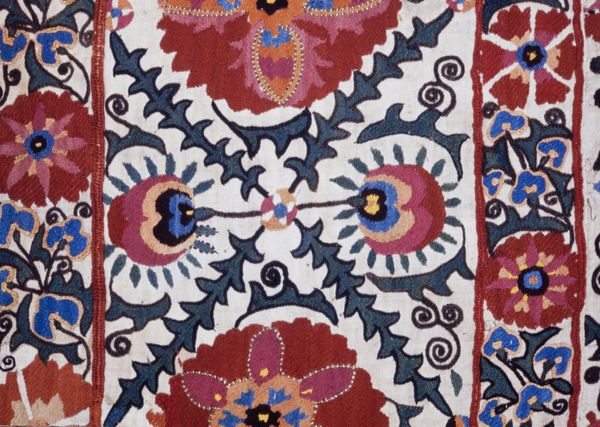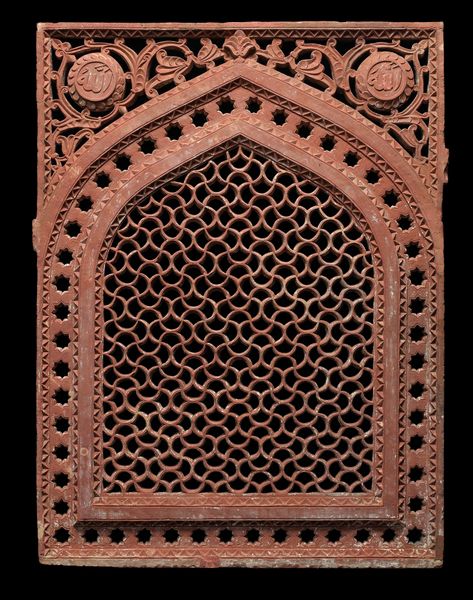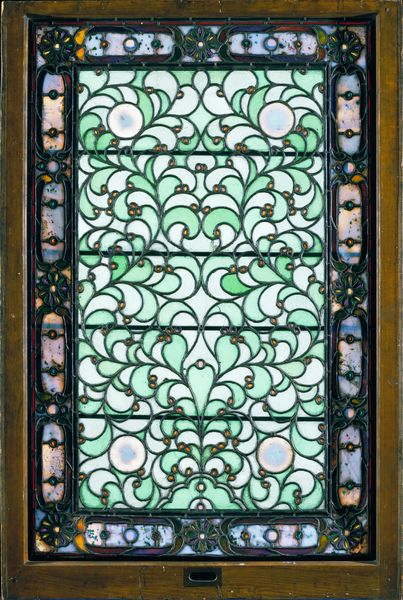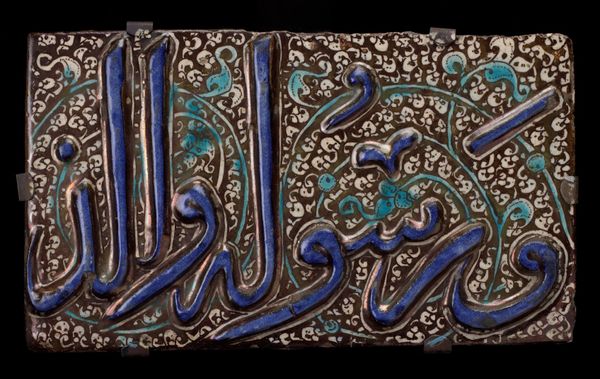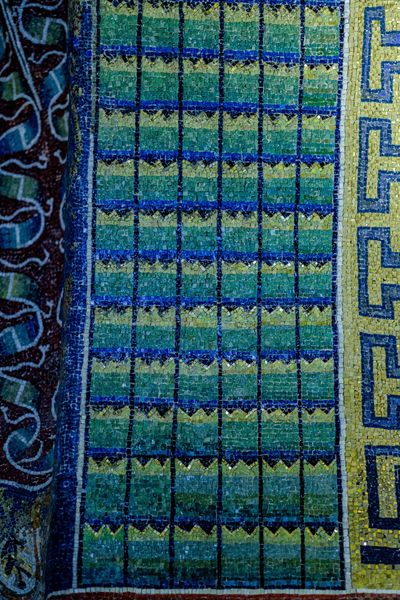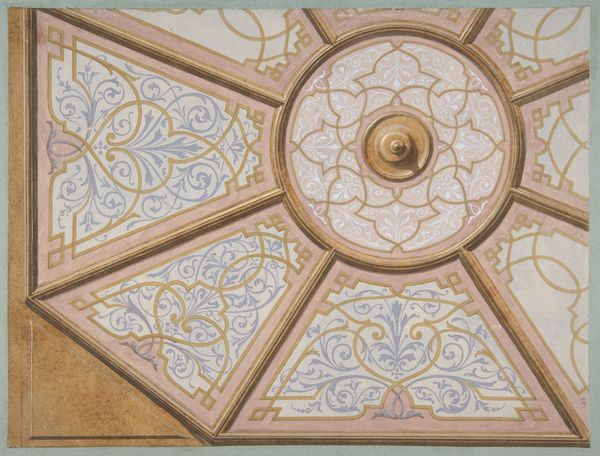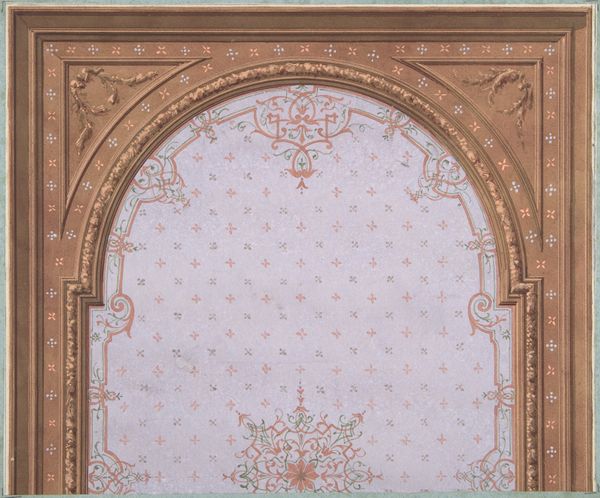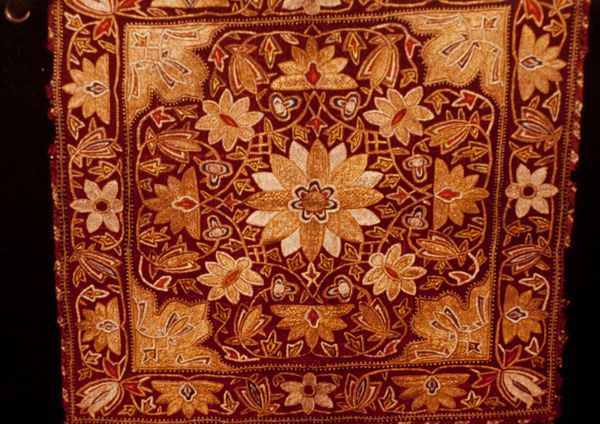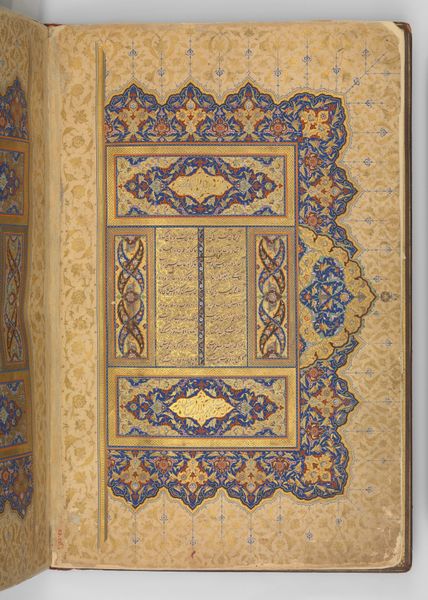
ceramic
#
organic
#
ceramic
#
organic pattern
#
islamic-art
#
decorative-art
Dimensions: 23 3/16 x 45 3/4 x 1 11/16 in. (58.9 x 116.21 x 4.29 cm)
Copyright: Public Domain
This "Tiled Arch" was created by an anonymous artist with tiles, and now resides at the Minneapolis Institute of Art. Given its floral design and arch shape, this piece likely comes from a tradition deeply entwined with Islamic art and architecture. The use of tilework, especially in blues and whites, speaks to the cultural aesthetics and craftsmanship prevalent in many regions influenced by Islamic design. It likely adorned a significant structure, perhaps a mosque, palace, or important civic building. As an anonymous work, questions arise around the identities and social positions of the artisans who created it. Were they celebrated masters or unrecognized laborers? How did their gender, class, or ethnic background influence their role in producing such a piece? The arch itself symbolizes a gateway—literally and metaphorically—to new experiences or sacred spaces. Consider, as you look at this piece, the countless hands that shaped these tiles, and the lives and stories embedded in this fragment of architectural heritage.
Comments
minneapolisinstituteofart about 2 years ago
⋮
God is the Light of the Heavens and the Earth The example of His light is that of a niche, in which there is a lamp– Surah An-Nor (“The Light”) 24:35 This Qur’anic verse compares God’s divine light with that of a lamp glowing within a niche, and is often featured encircling the mihrab, a recessed space in a mosque that indicates the direction of prayer towards Mecca. Although these two artworks did not arise from specifically religious contexts, in combination they give form to this important Islamic concept.The tiled arch, perhaps from a palace, demonstrates the profusion of Islamic ceramic traditions in South Asia. The lyrical flower and vine motifs recall the atmosphere of al-Janna, or Garden of Eden, profusely described in over 130 Qur’anic verses. The vase is European, created by French ceramicist Théodore Deck, whose creative process involved emulating designs from what was then called the ‘Orient.’ He masterfully combined many of the glazes and patterns seen in the cases behind, laying them onto the form of a mosque lamp, which in Islamic contexts would have been made of glass. The Arabic script is ornamental, or pseudo-calligraphy, not intended to be read.
Join the conversation
Join millions of artists and users on Artera today and experience the ultimate creative platform.
